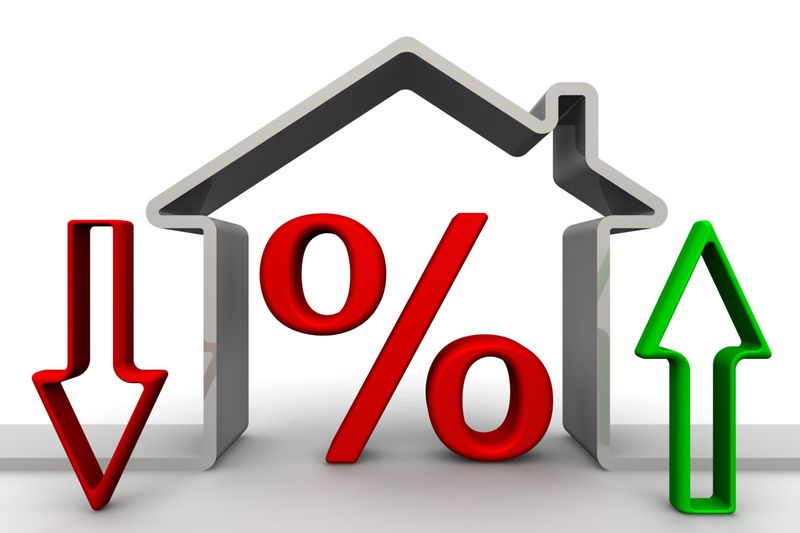
Dubai: Knowing how interest is calculated can help you understand the true cost of your debt.
One of the first things you learn when it comes to money management is the concept of interest, which comes into play when you’re lending or borrowing money.
Lenders earn interest on the money they lend, while the borrowers pay interest on the money they borrow. Interest is a percentage of the money you borrow or lend that is paid periodically. Although it’s typically quoted on a yearly basis, interest can last for as long or as short a time as the lender requires.

Key types of interest and its real life applications
The key types of interest include Simple or regular interest, Accrued or accumulated interest, and Compounding interest. When money is borrowed, usually through the means of a loan, the borrower is required to pay the interest agreed upon by the two parties.
Simple interest is typically used when obtaining credit card loans, car loans, student loans, consumer loans, and sometimes even mortgages. On the other hand, Compound interest is often used to boost investment returns in the long term, like investments.
Another common use of Compounding interest is in bank accounts, particularly savings accounts. Student loans, mortgages, and credit cards can also use Compound interest so be sure to keep an eye out for the interest rate when making big financial decisions like these.
There are no hard and fast rules for what purchases constitute Simple or Compound interest, so be sure to ask your lender or do your research before borrowing money. Understanding Simple and Compound interest is valuable in helping you take control of your finances.
Whenever you’re borrowing money, it’s highly likely that interest rates are involved. This makes it even more important to understand the ins and outs of interest and how to maximise your money management.

Brushing up on interest rate basics
Simple or regular interest is the amount of interest due on the loan, based on the principal loan outstanding (i.e. the original borrowed amount).
For example, if an individual borrows Dh2,000 with a 3 per cent annual interest rate, the loan would require a Dh60 interest payment per year (Dh2,000 (multiplied by) 3 per cent (3/100) = Dh60).
Accrued interest is accumulated interest that is unpaid until the end of the period. If a loan requires monthly payments (at the end of each month), interest steadily accumulates throughout the month.
For example, if Dh30 is the interest expense each month, the loan is accruing Dh1 of interest each day that requires payment once the end of the month is reached. In this example, by day 15, the loan will have accumulated Dh15 in Accrued interest (but require payment once Dh30 is reached).

Compounding interest essentially means “interest on interest.” The interest payments change each period instead of staying fixed. Simple interest is based solely on the principal outstanding, whereas Compound interest uses the principal and the previously earned interest.
If a person borrowed Dh1,000 with 2 per cent interest and has Dh100 of Accrued interest, then that year’s interest would be Dh22. It is because the interest is paid on the principal (i.e. the original borrowed amount of Dh1000) and the Accrued interest (Dh100), for a total of Dh1100. 2 per cent (2/100) of Dh1100 is Dh22.
Simple interest: Simple interest would be the equivalent of receiving Dh5,200 after the first year, withdrawing the Dh200, and then having Dh5,000 before the next period. Every period the individual will receive Dh200.
Compounding interest: Compounding interest would increase the interest payments since you are receiving interest on your interest.
If the individual left the Dh5,200 in their bank account, they would have Dh5,408 by the end of the next period (which is a Dh208 gain instead of the Dh200 with Simple interest). This shows the power of Compounding interest.
How is credit card interest calculated?
If your credit card has an annual percentage rate of, say, 18 per cent, that doesn't mean you get charged 18 per cent interest once a year.
Depending on how you manage your account, your effective interest rate could be higher, or it could be lower. That's because interest is calculated on a daily basis, not annually, and is charged only if you carry debt from month to month.
Your interest rate is identified on your credit card statement as the annual percentage rate, or APR. Since interest is calculated on a daily basis, you'll need to convert the APR to a daily rate. Do that by dividing by 365. The result is called the periodic interest rate, or sometimes the daily periodic rate.

For example, a 6 per cent APR paid monthly would be divided into twelve 0.5 per cent payments. (6/12=0.5). A 4 per cent annual rate paid quarterly would be divided into four 1 per cent payments. (4/4=1)
What interest rates do credit card issuers use?
Most of us know that our credit cards come with a quoted interest rate, and that’s the amount of interest our balance would generate over the course of a year if we didn’t pay it off at all. This is called the APR or annual percentage rate.
At first glance, then, you might expect that a Dh1,000 credit card with a 29.9 per cent APR would generate Dh299 in interest charges over the course of a year, right? No. After a year, the balance on your credit card would actually be Dh1,353.95. So, where did that extra Dh54.95 come from? It came from daily compounding.
The majority of credit card issuers Compound interest on a daily basis. This means that your interest is added to your principal (original) balance at the end of every day. If your credit card has an annual percentage rate of, say, 18 per cent, that doesn't mean you get charged 18 per cent interest once a year.
Depending on how you manage your account, your effective interest rate could be higher, or it could be lower. It could even be 0 per cent. That's because interest is calculated on a daily basis, not annually, and is charged only if you carry debt from month to month.
Let’s say you have a card with a 20 per cent rate. To convert this to a daily rate, simply divide 20 per cent by 365.
Keep in mind, you need to convert the percent to a decimal first, so divide by 100. Your daily rate would be .000555, and this is how much it compounds by.

Here’s how to beat daily compounding credit card interest
Carrying a balance on your credit card past the due date on your statement is even worse than you think. Not only does it start accumulating interest at that point, but you lose your grace period (which is the period between your credit card statement being mailed to you and the due date), meaning that new expenses on your card start accumulating interest immediately.
As soon as you don’t pay off your card in full by the due date, that grace period goes away. Instead, purchases you make on your credit card start to accrue interest immediately, as soon as you make them.
This makes a big difference. If you put Dh1,000 on your 29.9 per cent interest credit card, do not have an ongoing grace period and you don’t pay it off for 30 days, you accumulate Dh25.22 in interest. That’s tacked right onto the balance so it will keep growing and building moving forward.
On the other hand, if you have been paying off your credit card in full and you do have a grace period, you owe no interest on that expense.
This is because, even if you pay off everything on your bill, it still accumulates interest between when the bill was sent to you and when you paid it off. That extra accumulated interest will show up on your next bill, which you also need to pay off in full to get your grace period reinstated.
The solution is to pay off your credit card in full and keep it that way. Simply pay off your full credit card balance two months in a row and your grace period is restored. Going forward, you’ll see no interest charges on your statement as long as you keep paying off all of your new charges in full.
At that point, a credit card becomes a convenient tool rather than a source for debt. It makes many types of payment much easier and, if you have a good rewards program on your card, it accumulates rewards effortlessly. One good practice to make this easier is to only use your credit card for certain kinds of purchases.

What interest rates do personal loan issuers use?
Personal loans tend to offer lower rates compared to credit cards and the repayment terms are fixed, which means you won’t have to worry about the debt lingering.
Personal loan interest rates are expressed as a percentage of the amount you borrow. Personal loan interest is commonly calculated using Simple interest method, rather than Compound interest.
With the Simple interest method, the interest amount increases based on the amount you borrow, the interest rate and the length of the loan.
If you borrowed Dh1,000 at a rate of 5 per cent with a loan term of one year, you’d pay Dh50 in interest. If the term is extended to two years, the interest would double to Dh100.








